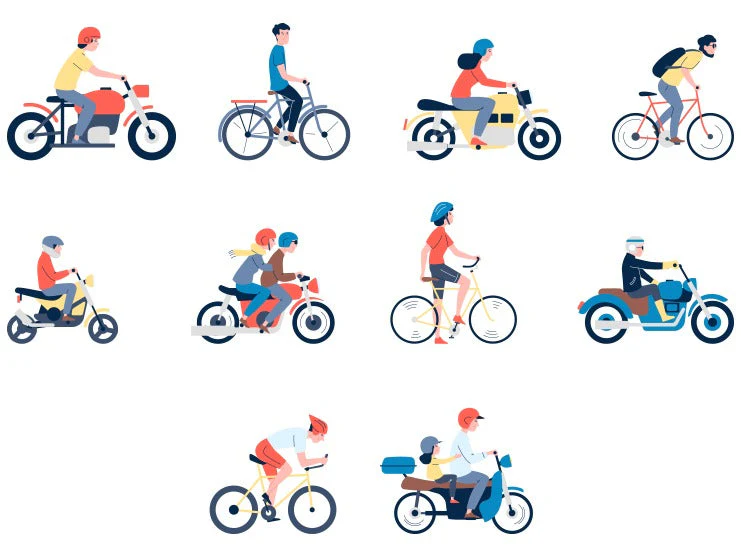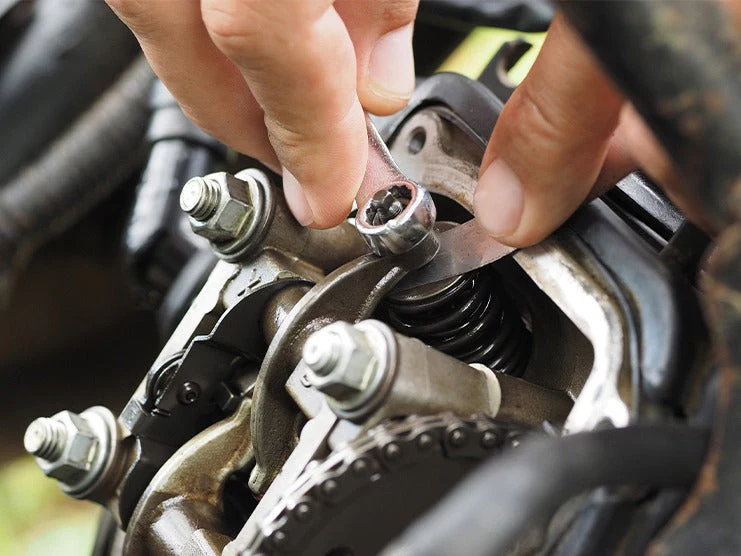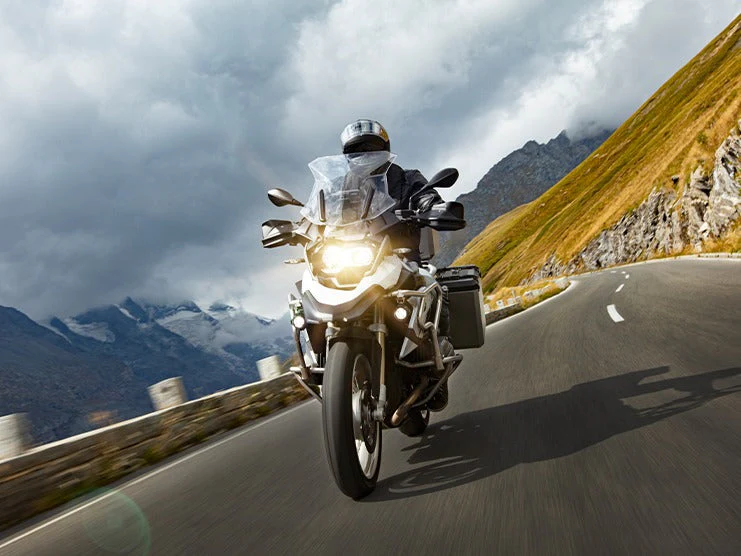Have you ever wondered if riding a motorcycle is similar to riding a bicycle? While there are similarities between the two, there are also differences riders should be aware of. Though both require mastering keeping balance and learning riding skills, there are differences in terms of power, weight, and safety. This article will explore the similarities and differences between riding a motorcycle and riding a bicycle.
Table of Content
1. Size and Weight Differences Between Motorcycles and Bicycles
Motorcycles and bicycles differ in terms of size and weight. Motorcycles are significantly larger and heavier than bicycles. A typical motorcycle weighs anywhere from 400 to 800 pounds, while a typical bicycle weighs around 25 pounds.
Motorcycle:
A motorcycle is capable of traveling much faster than bicycles due to its powerful engine being able to handle its size and weight, Maneuvering a motorcycle through traffic requires an advanced skillset to operate safely. Riders must always be aware of their surroundings and other vehicles on the road.
Bicycle:
Bicycles are much lighter and smaller, making them more maneuverable and easier to navigate through traffic. Their small size also makes them easier to store and transport.
Which One to Choose:
When choosing between a motorcycle and a bicycle, take the differences in size and weight into consideration. Motorcycles are more suited for long-distance travel or commutes, while bicycles are better for short trips or leisurely rides. It is important to choose the vehicle that best fits your needs and skills.
2. Propulsion Methods: Engines vs. Legs
The most significant difference between motorcycles and bicycles is the propulsion method.
Motorcycles:
Motorcycles are powered by engines that come in various sizes, from small 50 cc engines to larger 1000 cc engines. The engine’s power output determines how fast the motorcycle can go and how quickly it can accelerate. Unlike bicycles, motorcycles can achieve higher speeds due to the engine’s power output.
Bicycles:
Bicycles rely on the rider’s leg power to move forward. The rider must pedal the bicycle to move the bicycle forward. This can be a strenuous activity, especially when riding uphill or for extended periods. However, bicycles are much more eco-friendly than motorcycles as they do not emit any harmful exhaust fumes.
3. Required Licenses and Skill Levels
Motorcycle:
In most countries, you must possess a special license to be able to legally operate a motorcycle. The requirements for obtaining a motorcycle license vary by country but typically involve passing a written test and a practical driving test. In some countries, riders may be required to complete a safety course before being eligible for a motorcycle license.
Bicycle:
You don’t need a license to ride a bicycle. However, it is important to know and follow the rules of the road to ensure safety. This includes wearing proper riding gear and obeying traffic laws.
Skill Comparison:
Riding a motorcycle requires a higher level of skill than riding a bicycle due to its larger size and higher speeds. Motorcyclists must also have excellent balance and coordination to ensure they stay in control of their motorcycles when in a variety of situations, such as heavy traffic or adverse weather conditions.
4. Similarities in Balancing and Maneuvering
Riding motorcycles and bicycles requires good maneuverability. Riders must be able to avoid obstacles, navigate through traffic, and clear turns. Both motorcycles and bicycles use handlebars to steer and riders must shift their weight by leaning when making turns.
Motorcycles and bicycles also require balancing and staying upright while in motion. To maintain balance, riders must constantly adjust their weight and the center of gravity. This is a skill that requires practice to master, particularly when riding at higher speeds or turning corners.
Whether riding a motorcycle or a bicycle, riders must practice scanning their surroundings and anticipating potential hazards. This includes maintaining a safe distance from other vehicles and being aware of the condition of the road.
5. Importance of Protective Gear
Wearing proper protective gear can help reduce the risk of injury in the event of an accident while riding a motorcycle or a bicycle. The most important piece of protective gear is a helmet. A helmet protects the rider’s head and reduces the risk of suffering serious injuries. When choosing a helmet, make sure it fits properly and meets the safety standards set by your state’s transportation authority.
Riders should also wear appropriate clothing to protect themselves from abrasions, cuts, and other injuries. Motorcycle riders should wear jackets, gloves, and boots made of durable materials like leather or Kevlar. Bicycle riders can wear lightweight clothing, such as padded shorts and jerseys made of breathable materials.
Proper footwear will protect your feet from being injured when interacting with the street or sidewalk. Motorcycle riders should wear boots that reach up to the ankles to ensure better protection in the event of an accident.
Make sure that your riding gear is reflective to ensure better visibility when riding at night or in low light. Reflective clothing or accessories make it easier for other drivers to spot you on the road, reducing the risk of accidents.
6. Safety Tips for Riding a Motorcycle
Riding a motorcycle is an enjoyable experience but also carries inherent risks. Here are some important safety considerations for riding a motorcycle:
Wear Proper Protective Gear:
Proper protective gear should include a helmet, a jacket, gloves, boots, and protective clothing.Be Visible:
Motorcycles are smaller and harder to spot. Wear reflective gear and use headlights and turn signals to increase visibility to other drivers.Follow Traffic Laws:
Motorcycles are subject to the same traffic laws as other vehicles. Follow speed limits, stop signs, and traffic signals, and avoid lane splitting.Stay Alert:
Motorcyclists need to be alert and focused at all times. Keep an eye out for other drivers, pedestrians, and hazards on the road.Maintain Your Motorcycle:
Regularly maintaining your motorcycle can help keep it in working condition. Check the brakes, tires, and lights, and make sure the bike is checked according to the manufacturer's recommendations.Avoid Riding Under the Influence:
Riding a motorcycle while under the influence due to drugs or alcohol is extremely dangerous. It can impair your ability to react to hazards on the road and increase the risk of getting into an accident.Take a Safety Course:
Taking a motorcycle safety course can help improve your riding skills and teach you how to handle different riding scenarios.
7. Importance of Taking a Motorcycle Safety Course
Taking a motorcycle safety course is an important and useful step for anyone looking to ride a motorcycle. Here are some reasons why:
| Importance of Motorcycle Safety Course | ||
|---|---|---|
| Sr. no. | Reason | Explanation |
| 1 | Learn Essential Riding Skills | Motorcycle safety courses help teach riders how to operate a motorcycle safely. This includes learning basic skills, such as starting, stopping, shifting gears, and turning. As you progress, you will also learn more advanced skills like emergency braking and swerving. |
| 2 | Develop Defensive Riding Techniques | Defensive riding is about anticipating potential hazards and taking steps to avoid them. A motorcycle safety course can teach riders how to identify roadhazards and practice defensive riding techniques to avoid accidents. |
| 3 | Gain Confidence | Learning new skills can help riders feel more confident and comfortable when operating their motorcycles. |
| 4 | Reduce Insurance Costs | Many insurance companies offer discounts to riders who have completed a motorcycle safety course. By taking a course, riders can save money on their insurance premiums. |
| 5 | Meet Licensing Requirements | In some countries, completing a motorcycle safety course is required to obtain a motorcycle license. Even if it is not required, taking a course can help riders prepare for the licensing exam. |
| 6 | Learn About Motorcycle Maintenance | Many motorcycle safety courses include information on basic motorcycle maintenance. This help riders keep their motorcycle in working condition and avoid breakdowns on the road. |
8. Riding with Style: Motorcycle and Bicycle Modifications
One of the best parts of owning a motorcycle and bicycle is being able to customize it to better fit your style. Here are popular modifications for motorcycles and bicycles:
Motorcycle Modifications:
- Exhaust System: Upgrading the exhaust system can increase the power output and volume of the engine.
- Suspension: Changing the suspension can improve handling and stability.
- Saddlebags: Adding saddlebags can improve storage capacity and your motorcycle’s look.
- Performance Upgrades: Upgrading the engine, brakes and other components with aftermarket motorcycle parts can improve your motorcycle’s overall performance.
- Aesthetics: Adding custom paint jobs, brakes, chrome, or other visual modifications can give your motorcycle a unique look.
Bicycle Modifications:
- Tires: Changing the tires can improve speed and traction.
- Brakes: Upgrading the brakes can improve stopping power.
- Lighting: Adding lights can increase visibility and improve safety.
- Aesthetics: Adding accessories such as a basket, fenders, or a custom paint job can give the bike a unique look.
Differences Between Motorcycle and Bicycle Modifications:
Motorcycle modifications focus on improving speed and performance. Bicycle modifications focus on improving efficiency and safety.
Note: Remember to always ride safely and responsibly, and check the local laws before making any modifications.
9. Conclusion
Riding a motorcycle and riding a bicycle can be similar, but mostly different due to each activity having its own challenges and considerations. Understanding these differences can help riders make informed decisions and enjoy riding their chosen mode of transportation more. You can improve your motorcycle's look and storage capacity by installing new Saddlebags, Sissy Bar Bags, Tank Bags, handlebars, fairings, seats, crash bars, luggage racks, and sissy bars.













Leave a comment
All comments are moderated before being published.
This site is protected by hCaptcha and the hCaptcha Privacy Policy and Terms of Service apply.